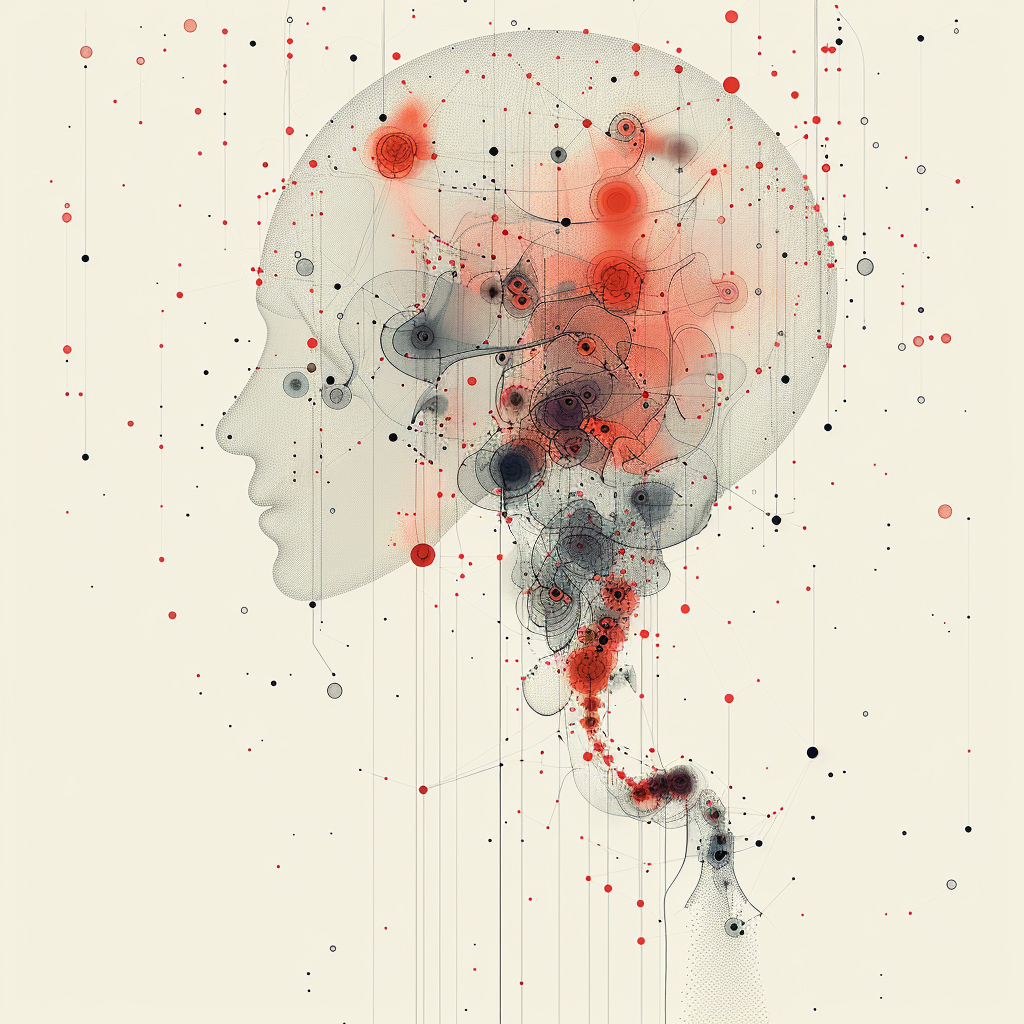1. Real-Time Detection
AI enables continuous, real-time monitoring of transactions and user behavior, which allows institutions to catch fraud the moment it happens. Machine learning models analyze streaming data and flag anomalies instantly, something impossible with periodic manual checks. This immediate detection means that suspicious transactions can be paused or stopped before completion. In sectors like banking and e-commerce, this rapid response prevents losses and protects customers in real time. AI-driven systems also adapt thresholds on the fly, balancing security with a smooth customer experience by avoiding unnecessary freezes on legitimate activity.

Real-time AI monitoring has shown tangible benefits in reducing fraud. Financial institutions that implemented real-time fraud analytics cut their fraud losses by up to 30%. Speed is critical – one study found organizations can reduce fraud losses by as much as 70% if fraudulent activity is identified within the first 24 hours. Given these advantages, banks are rapidly adopting AI for instant detection; by 2024 about 71% of financial institutions were using AI/ML tools to combat fraud (up from 66% in 2023). This widespread use of AI reflects industry recognition that catching fraud in real time dramatically limits damage.
2. Pattern Recognition
AI’s pattern recognition capabilities vastly improve fraud detection by finding subtle correlations in data that humans or simple rules might miss. Machine learning models learn the “normal” patterns of customer behavior (e.g. typical transaction amounts, locations, times) and can detect anomalies that deviate from these norms. Unlike static rule-based systems, AI can cross-analyze dozens of variables simultaneously and adjust to new patterns. This means fraudulent behaviors that would slip through conventional filters—such as a cleverly disguised series of small unauthorized transactions or identity misuse—can be identified by the irregular patterns they form. Overall, AI’s ability to recognize complex patterns leads to higher fraud catch rates and fewer false alarms.

Organizations that deploy AI-based pattern recognition see significantly improved accuracy in fraud detection. According to the Association of Certified Fraud Examiners (ACFE), companies using AI-driven fraud detection reported about a 50% higher fraud detection rate compared to traditional rule-based methods. They also experienced a 60% reduction in false positives (legitimate transactions wrongly flagged as fraud) after implementing AI models. These improvements mean that AI is catching far more fraudulent patterns while sparing businesses and customers the friction of unnecessary alerts. In practice, this translates to millions saved by preventing fraud and by not interrupting genuine customer activity due to false alarms.
3. Predictive Analytics
AI’s predictive analytics use historical fraud data and trends to anticipate future fraudulent schemes before they occur. By analyzing past incidents, machine learning models can forecast which transactions or accounts are high-risk, allowing organizations to take proactive steps (such as requiring extra verification or blocking transactions) in advance. This forward-looking approach shifts fraud prevention from reactive to preventive. For example, if certain patterns often precede credit card fraud (like a sudden change in IP address or a series of balance inquiries), AI can recognize those precursors and alert staff or auto-decline the transaction. Predictive analytics essentially arms fraud teams with foresight – they can harden defenses and allocate resources to the areas of greatest predicted risk, stopping new fraud tactics in their tracks.

Adoption of AI predictive analytics is growing as organizations see its value in fraud prevention. As of 2024, roughly 27% of organizations were already using predictive analytics or modeling for fraud detection, and an additional 22% planned to adopt it in the next two years. The payoff from these tools is significant: a study by McKinsey & Company estimates that AI-driven fraud detection systems can reduce fraud-related costs by 30%–50%. These savings come from preventing fraud losses and streamlining labor – AI flags likely fraud so that analysts spend time only on the most probable cases. The fraud analytics market is expanding accordingly, with financial services and retailers investing heavily in predictive models to stay ahead of scammers. By leveraging predictive analytics, companies are not just responding to fraud that has happened, but actively thwarting fraud attempts before any money is lost.
4. Adaptive Learning
Adaptive learning refers to AI systems that continuously update their fraud detection models based on new data and emerging fraud tactics. Fraud schemes evolve quickly – criminals change strategies, find new loopholes, or use novel technologies (like deepfakes or synthetic identities) to bypass security. Adaptive AI “learns” from each attempted fraud and from feedback (such as confirmed fraud cases or false alarms) to refine its algorithms. This means the longer the system operates, the smarter it gets at catching latest scams. For example, if scammers start using a new pattern of transactions to test stolen credit cards, an adaptive system will incorporate this pattern into its model after a few instances. By contrast, older static systems would miss such new schemes until manually updated. In essence, adaptive learning lets fraud defenses keep pace with – or even stay ahead of – the criminals’ evolving techniques.

The ability to learn and adapt is crucial given the rapid rise of new fraud methods. In 2024, synthetic identity fraud (where criminals create fake identities by combining real and fictitious data) surged dramatically – one report from the UK saw a 60% increase in false-identity fraud cases compared to the prior year. These synthetic IDs now comprise nearly a third of all identity fraud in that region. Such trends are fueled by fraudsters using AI tools themselves, for example to swiftly generate realistic fake identities and documents. Yet many organizations are not fully prepared to counter these novel attacks: in an Experian survey, only 25% of financial companies felt confident in their ability to combat synthetic identity fraud, and just 23% felt prepared to handle AI-driven deepfake fraud. This gap highlights why adaptive learning is vital – AI systems must continually update their fraud-detection logic as scammers introduce new techniques. With adaptive machine learning (and even reinforcement learning), fraud models evolve in real-time, helping businesses respond to emerging threats like deepfakes or new social engineering ploys that were unknown just months before.
5. Enhanced Data Integration
AI allows fraud detection systems to aggregate and analyze data from multiple sources and platforms, creating a holistic view that was previously hard to achieve. Traditional fraud checks might only use a bank’s internal transaction records, for example, but AI can integrate additional data streams like device fingerprints, geolocation, IP address reputation, social media clues, and more. By fusing these diverse data points, AI models can uncover complex fraud schemes that span across accounts or institutions. Enhanced data integration means that if the same fraudster tries a scheme on different platforms (bank accounts, credit cards, insurance claims), the system can connect the dots. It also improves accuracy: with more context, AI can better distinguish legitimate behavior from fraud (for instance, recognizing that a customer’s two accounts are related, or linking seemingly unrelated transactions that are part of one fraud ring). In summary, AI-driven integration breaks down data silos – the system “sees the big picture” of fraudulent activity.

Using a wider variety of data has been shown to measurably improve fraud detection outcomes. In one study, organizations that expanded the diversity of data sources in their fraud models saw a 23% improvement in detection accuracy on average. This is because combining data (transaction records, device info, public records, etc.) enables AI to spot subtle correlations that would be missed in isolated datasets. Many companies are moving in this direction: 62% of organizations currently use data from more than one source as part of their anti-fraud analytics programs. A real-world example of data integration’s power comes from JPMorgan Chase, which reportedly processes about 5 petabytes of data daily in its AI fraud systems – doing so has helped the bank cut an estimated $600 million in fraud losses per year. These results underscore that more data (handled intelligently by AI) translates to better fraud detection. By integrating information across silos – from banking transactions and credit reports to IP logs and beyond – AI systems can detect complex, cross-channel fraud schemes that would otherwise go unnoticed.
6. Automated Alerts
AI can automatically generate and prioritize fraud alerts, ensuring suspicious activities are promptly brought to attention without relying on manual monitoring. In a modern bank or e-commerce setting, millions of transactions occur daily – far too many for human analysts to watch in real time. AI-driven systems address this by evaluating each transaction against learned fraud patterns and risk models, and automatically flagging those that look suspect. These alerts are often tiered by risk level, so higher-risk alerts can trigger immediate actions (like blocking a transaction or requiring step-up authentication) while lower-risk ones queue for review. Automated alerts mean nothing “falls through the cracks”: every anomalous pattern – no matter how small – will raise a flag if it fits a fraud profile. This not only catches more fraud, but also reduces the workload on fraud teams, as AI filters out false positives (or trivial issues) and lets analysts focus on genuinely suspicious cases. Overall, automated alerts act as a vigilant 24/7 sentinel, never tiring or getting distracted, and significantly speed up response times to potential fraud incidents.

The volume of fraud attempts today makes automation essential. In 2024, nearly 79% of organizations were victims of payments fraud attacks or attempts, illustrating how widespread the threat is. Many businesses face dozens or hundreds of fraud events daily, and AI-generated alerts help ensure each threat is identified immediately. The speed of notification is critical because once fraud succeeds, recovery is difficult – only 22% of organizations were able to recover at least 75% of funds lost to fraud in 2024, a sharp drop from 41% in the prior year. This decline in recovery rates shows that preventing losses in real-time (through instant alerts and intervention) is far more effective than trying to claw back money after the fact. Automated AI alerts address this by instantly warning of suspicious transactions (via email, SMS, dashboard, etc.) the moment they occur. Moreover, modern AI alert systems use risk scoring to prioritize cases, so that critical alerts (e.g. a large wire transfer to an unusual recipient) get immediate attention. By automatically flagging and triaging incidents, AI-driven alert systems enable faster responses by fraud teams and ensure that no warning signs are missed in the noise of daily operations.
7. Risk Assessment
AI enhances risk assessment in fraud detection by evaluating the risk level of transactions or activities with far greater nuance than traditional rules. Instead of a binary “pass/fail” rule (e.g., block transactions over $10,000 from abroad), AI risk-scoring models output a risk score on a continuum, reflecting how likely a given action is to be fraudulent. This score is calculated by analyzing dozens or even hundreds of factors in combination – device fingerprint, user’s typical behavior, transaction velocity, past fraud patterns, etc. The benefit is a more refined judgment: transactions can be tiered (low risk, moderate risk, high risk) and handled accordingly (approve, hold for review, or decline). AI-based risk assessment is constantly learning, so as fraud patterns shift, the risk model adjusts the weighting of factors to maintain accuracy. Financial institutions use this to make real-time decisions on whether to allow transactions, require additional authentication, or send an alert. By quantifying risk so precisely, AI helps minimize false positives (letting genuine customer activity through unhindered) while aggressively intercepting the truly risky transactions.

Robust AI risk assessment has led to dramatic improvements in fraud prevention outcomes. A striking example is from the U.S. Treasury’s anti-fraud efforts: by using machine learning and data-driven risk screening, the Treasury Department prevented and recovered over $4 billion in fraudulent payments in fiscal year 2024. This was a massive jump – more than a six-fold increase from the ~$653 million prevented the year before – attributed largely to AI systems that better identify high-risk transactions before they go through. In these systems, each payment is assigned a risk score based on AI analysis, and those above a certain threshold are stopped or reviewed. The Treasury’s results mirror what private-sector banks are seeing as they implement AI risk scoring: more fraud caught and far fewer losses. AI risk models can analyze transactions in milliseconds, even before a payment is completed, applying rules and learned patterns to assign a probability of fraud. For instance, expanding risk-based screening of government payments by Treasury in 2024 led to about $500 million in fraud prevented, and prioritizing the riskiest transactions for intervention prevented another $2.5 billion in fraud that year. These figures demonstrate how AI-driven risk assessment enables a scale and effectiveness of fraud prevention that was previously unattainable, by focusing attention exactly where the risk is highest.
8. Text Analysis
AI-based text analysis leverages Natural Language Processing (NLP) to scan and understand textual data for signs of fraud. This is particularly useful for detecting fraud in communications, such as phishing emails, scam text messages, fake insurance claims, or fraudulent loan applications. AI can be trained to recognize linguistic patterns or keywords that often indicate deception – for example, an urgent tone asking for money transfer, poor grammar in a supposed business email, or terminology that doesn’t match a claimant’s profile. Beyond keywords, advanced NLP models assess context, sentiment, and even metadata (like email headers) to judge authenticity. For instance, in the case of phishing emails or business email compromise (BEC) scams, AI can analyze the email content and detect subtle anomalies (slightly misspelled domain names, atypical payment instructions, or language that deviates from the sender’s usual style). By processing vast amounts of text faster than any human, AI text analysis can filter through communications and flag only those that are likely fraudulent, allowing human investigators to focus on a small subset of high-risk messages. This greatly improves detection of fraud attempts that come in textual form.

`One of the largest fraud threats via text is phishing and business email compromise (BEC), where criminals use emails or messages to trick victims. In 2023, the FBI’s Internet Crime Complaint Center received over 21,000 reports of BEC incidents, with losses totaling nearly $2.9 billion for that year. BEC scams typically involve fraudulent emails impersonating a trusted party to induce unauthorized fund transfers. They remain a top concern for companies – a 2024 survey found 63% of organizations identified BEC as the number-one avenue for fraud attempts against them. AI text analysis is being deployed to combat these threats by parsing the content and headers of emails to catch indicators of fraud (for example, an email that claims to be from a CEO urgently requesting a wire transfer). In practice, AI email scanners and chatbots have greatly reduced successful phishing attempts by automatically filtering out suspicious communications. Large email providers report blocking billions of phishing emails every year using AI. By examining language and context that humans might overlook, AI’s text analytics can flag scams like fake invoice emails, bogus customer support chats, or phishing SMS messages with high accuracy, often before any employee or customer falls victim.
9. Image and Video Analysis
AI is increasingly employed to analyze images and videos for signs of fraud, which is crucial as scammers turn to more sophisticated visual deception. For instance, computer vision algorithms can examine IDs or documents uploaded online to spot forgeries – AI looks for inconsistencies in fonts, photo shadows, or hologram placement that would be hard for a human eye to catch. In insurance or tax fraud, AI can analyze submitted photos (of damage, receipts, etc.) to verify if they are authentic or reused from the internet. More recently, a major concern is deepfakes – AI-generated synthetic videos or voice that impersonate real people. Fraudsters have begun using deepfake videos or audio (like mimicking a CEO’s voice) to authorize fraudulent transactions. AI can help here by analyzing video/audio for artifacts of deepfakes or requiring “liveness” checks (prompting random actions to ensure a real person is on camera). In security surveillance, AI video analysis can detect suspicious behaviors (for example, at ATMs or retail stores, AI can flag if someone is using a card and covering the camera in an unusual way). Overall, AI’s ability to scrutinize visual data enables detection of fraud that manifests in forged documents, manipulated media, or abnormal physical behaviors that indicate wrongdoing.

Visual fraud has grown more prevalent with advanced technology, and AI is vital to counter it. In 2024, deepfake fraud attempts occurred at an alarming rate – on average one every five minutes globally, according to a security report. These include fake videos or audio clips used to defraud businesses and individuals. At the same time, criminals increasingly turned to digital document forgery: the incidence of digital document forgeries jumped 244% in one year (2024 over 2023). In fact, digital forgeries overtook physical document fraud as the primary method of document-related identity fraud in 2024. The impact on companies is severe: a recent industry survey found 92% of organizations had experienced a financial loss due to deepfake fraud, with the average loss around $450,000 per incident (and over $600,000 in the financial sector). In response, businesses are deploying AI-based image and video verification tools. These systems perform tasks such as facial recognition with anti-spoofing checks (to ensure a live person is present), analysis of ID document images for subtle signs of tampering, and detection of manipulated videos. AI can detect the slight pixel-level distortions or anatomical inconsistencies that often accompany deepfake images, flagging them as fraudulent. With the volume of deepfake and visual fraud incidents rising, AI’s ability to automatically vet visual media has become essential for maintaining trust in digital transactions and remote customer onboarding.
10. Network Analysis
Network analysis in fraud detection uses AI to map relationships among entities (people, accounts, devices, etc.) to uncover organized fraud rings and collusion that would not be evident from one isolated event. Instead of examining transactions independently, network analysis looks at the links – for example, two different customer accounts that share a phone number or IP address might indicate a coordinated fraud operation. AI excels at this graph-style analysis, identifying clusters of accounts or transactions that are interrelated. This is especially useful for detecting fraud rings (groups of fraudsters working together) and money laundering networks. By visualizing and analyzing these connections, AI can find “hubs” of fraudulent activity (say, one device used to access 50 different bank accounts) or chains of transactions that suggest layering of funds. Network analysis can also incorporate social network data – for instance, linking identities through email addresses, social media, or referral patterns to see if a set of users might actually be the same fraudster or a coordinated group. In summary, AI-powered network analysis moves fraud detection from just looking at individual datapoints to seeing the web of interactions, which is critical for busting complex schemes like bust-out fraud, mule networks, or conspiracies involving insiders.

Organized fraud networks are a growing threat, and AI has revealed just how extensive they can be. According to a fraud prevention firm’s internal research, approximately 1 in every 100 online users is connected to a fraud network (also known as a fraud ring). These networks consist of multiple coordinated accounts engaging in illicit activities, often sharing resources or information. The size of fraud rings can vary widely – some have just a handful of members, while larger rings can include hundreds of linked identities (in some cases, up to 500–750 accounts tied together in one scheme). Such large-scale collusion would be extremely difficult to detect without network analysis tools. Financial industries report that when they applied AI network analytics, they uncovered links between fraud cases that were previously thought to be unrelated – for example, detecting that a set of fraudulent credit card applications all trace back to the same IP address and device farm. Law enforcement has similarly used network analytics to crack down on fraud: by mapping out networks of shell companies and mule accounts, one investigation can roll up an entire fraud ring responsible for millions in losses. The network approach led to identification of 50% more linked fraudulent accounts in one banking study (compared to traditional methods) according to industry reports. AI’s ability to crunch relationship data thus shines in this domain: it not only finds one bad actor, but the web of conspirators connected to that actor, enabling a much more effective fraud disruption.